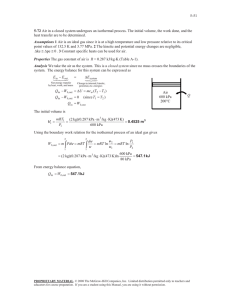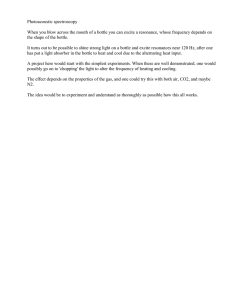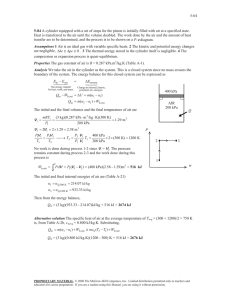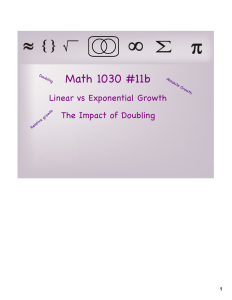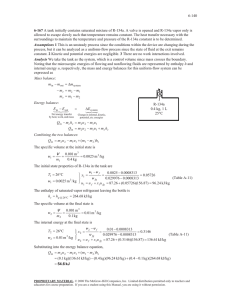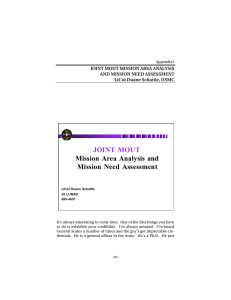6-98 the bottle. The amount of heat transfer through the wall... 6-122
advertisement
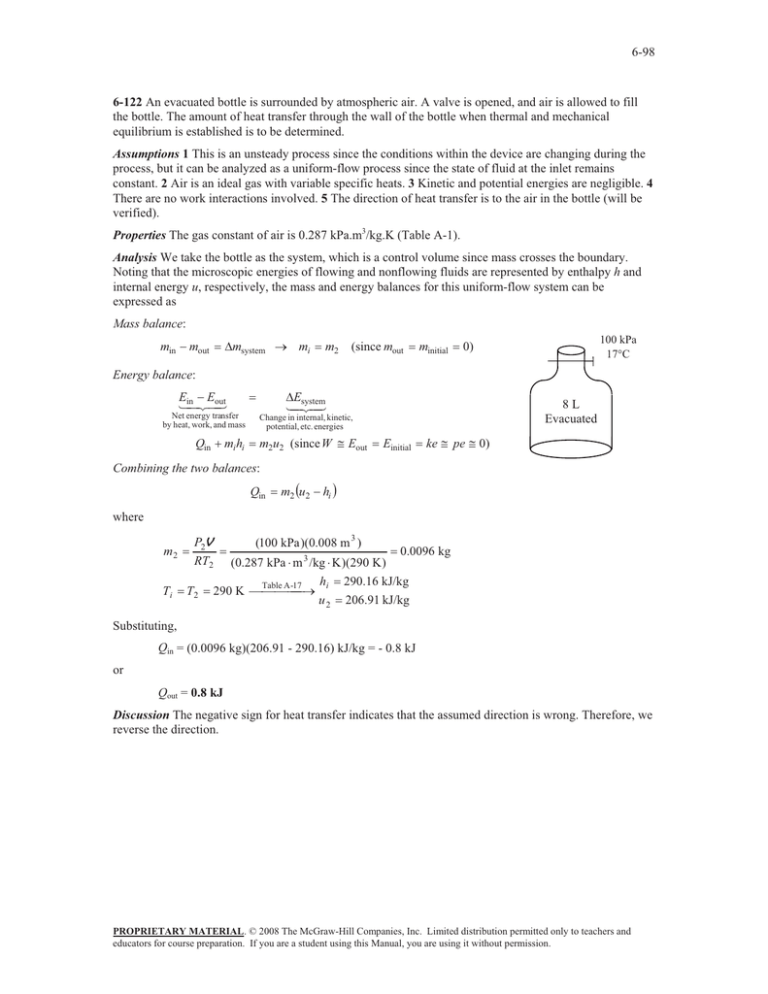
6-98 6-122 An evacuated bottle is surrounded by atmospheric air. A valve is opened, and air is allowed to fill the bottle. The amount of heat transfer through the wall of the bottle when thermal and mechanical equilibrium is established is to be determined. Assumptions 1 This is an unsteady process since the conditions within the device are changing during the process, but it can be analyzed as a uniform-flow process since the state of fluid at the inlet remains constant. 2 Air is an ideal gas with variable specific heats. 3 Kinetic and potential energies are negligible. 4 There are no work interactions involved. 5 The direction of heat transfer is to the air in the bottle (will be verified). Properties The gas constant of air is 0.287 kPa.m3/kg.K (Table A-1). Analysis We take the bottle as the system, which is a control volume since mass crosses the boundary. Noting that the microscopic energies of flowing and nonflowing fluids are represented by enthalpy h and internal energy u, respectively, the mass and energy balances for this uniform-flow system can be expressed as Mass balance: min mout 'msystem o mi m2 (since mout minitial 100 kPa 17qC 0) Energy balance: E Eout in Net energy transfer by heat, work, and mass Qin mi hi 'Esystem 8L Evacuated Change in internal, kinetic, potential, etc. energies m2u2 (since W # Eout Einitial ke # pe # 0) Combining the two balances: Qin m2 u2 hi where m2 Ti P2V RT2 T2 (100 kPa )(0.008 m 3 ) 0.0096 kg (0.287 kPa m 3 /kg K )(290 K ) h 290.16 kJ/kg -17 290 K Table A o i u 2 206.91 kJ/kg Substituting, Qin = (0.0096 kg)(206.91 - 290.16) kJ/kg = - 0.8 kJ or Qout = 0.8 kJ Discussion The negative sign for heat transfer indicates that the assumed direction is wrong. Therefore, we reverse the direction. PROPRIETARY MATERIAL. © 2008 The McGraw-Hill Companies, Inc. Limited distribution permitted only to teachers and educators for course preparation. If you are a student using this Manual, you are using it without permission.
